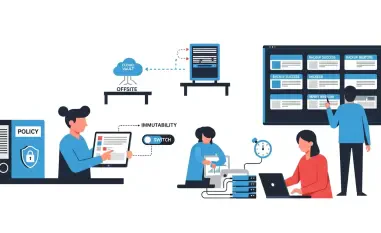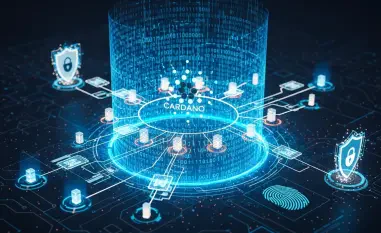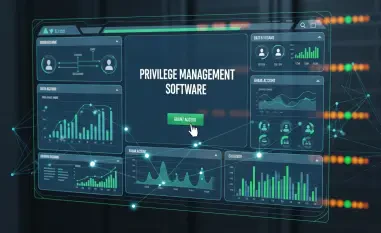I’m thrilled to sit down with Malik Haidar, a renowned cybersecurity expert with years of experience safeguarding multinational corporations from sophisticated threats. With a deep background in analytics, intelligence, and security, Malik has a unique ability to blend business perspectives with cutting-edge cybersecurity strategies. Today, we’re diving into the critical topic of lateral movement in cybersecurity, exploring how attackers navigate networks post-breach, the vulnerabilities they exploit, and the innovative defenses organizations can deploy to stay ahead. Our conversation touches on everything from the speed of modern attacks to the pivotal role of Active Directory and the power of deception technologies in thwarting adversaries.
Can you explain what lateral movement is in the context of cybersecurity and why it’s such a vital tactic for attackers after they’ve breached a network?
Absolutely. Lateral movement refers to the actions an attacker takes after they’ve gained initial access to a network. Unlike the first breach, which is often about getting a foot in the door through phishing or exploiting a vulnerability, lateral movement is about navigating deeper into the system. Attackers use this phase to explore, find valuable data, escalate privileges, and maintain persistence. It’s critical for them because a single compromised device rarely holds everything they want. By moving laterally, they can access sensitive assets, steal credentials, or even take control of critical infrastructure, making it a cornerstone of most sophisticated attacks, especially ransomware.
How does the incredibly fast breakout time of just 51 seconds, as seen in recent reports, change the way organizations need to prepare their defenses?
That speed is a game-changer. When attackers can move from one system to another in under a minute, traditional response times just don’t cut it. It means organizations have to shift from reactive to proactive strategies, focusing on prevention and real-time detection. This rapid pace creates immense pressure on cybersecurity teams to have visibility across their entire network and to deploy automated tools that can flag anomalies instantly. Without that, by the time you notice something’s wrong, the attacker could already be deep inside, escalating privileges or exfiltrating data.
Why is Active Directory often a prime target for attackers during lateral movement, and what makes it so vulnerable?
Active Directory, or AD, is like the keys to the kingdom in many organizations. It’s a central system for managing user credentials, permissions, and access across a network, so if an attacker compromises it, they can often control everything. It’s vulnerable for a few reasons—first, it’s often shared across multiple departments, leading to inconsistent security practices. Second, many organizations don’t prioritize hardening AD with proper monitoring or segmentation. Attackers know this and target it to steal credentials or gain admin-level access, which can be devastating.
Can you walk us through the reconnaissance stage of lateral movement and what attackers are typically trying to uncover during this phase?
Sure. Reconnaissance is the attacker’s planning phase. Once they’re inside, they start mapping out the network to understand its layout—things like host names, user accounts, network hierarchies, and critical assets. They’re looking for vulnerabilities to exploit, high-value targets like financial data or intellectual property, and pathways to move deeper. This stage is crucial for them to strategize their next moves, whether that’s stealing credentials or identifying systems with weak defenses, all while trying to stay under the radar.
Credential misuse is a huge issue in lateral movement. Why are stolen credentials so valuable to attackers, and how do they often get them?
Stolen credentials are gold to attackers because they allow them to blend in. Instead of breaking through defenses, they’re just logging in like a legitimate user, which makes detection incredibly hard. They often obtain these through social engineering tactics like phishing emails or business email compromise, where they trick users into revealing passwords. Other methods include deploying keyloggers or exploiting poorly secured systems. Once they have valid credentials, they can move laterally without tripping many traditional security alarms, making it a preferred tactic.
Privilege escalation seems to be a key goal for attackers. Can you explain what this entails and why it’s so dangerous for organizations?
Privilege escalation is when an attacker starts with limited access—say, a regular user account—and works to gain higher permissions, often aiming for administrator status. It’s dangerous because elevated privileges let them bypass security controls, access restricted data, and even alter system settings to hide their tracks. They might exploit misconfigurations, unpatched software, or stolen credentials to climb the ladder. Once they’re at the top, removing them from the network becomes a nightmare, as they can control almost everything.
Detecting lateral movement is challenging but possible. What are some practical strategies organizations can use to spot and stop these attacks early?
Detection is tough because attackers often use legitimate tools and credentials, but there are ways to catch them. First, focus on visibility—monitor network traffic and user behavior for anomalies, like unusual login times or access patterns. Second, implement technique-based detection, which looks for specific attacker behaviors rather than just known malware signatures. Tools like SIEM can help correlate events, but I also advocate for deception technologies. These create fake assets or credentials that trick attackers into revealing themselves when they interact with them, giving defenders a chance to study their moves and respond before real damage is done.
What role does deception technology play in defending against lateral movement, and how does it differ from traditional security approaches?
Deception technology is a game-changer because it flips the script on attackers. Unlike traditional approaches that focus on building walls or reacting to breaches, deception proactively misleads attackers by planting fake credentials, files, or network paths. When attackers engage with these decoys, they tip their hand, alerting defenders to their presence without realizing they’re in a trap. This can be especially effective for protecting critical systems like Active Directory by hiding real assets and feeding attackers false data, buying time to mitigate the threat. It’s a shift from purely defensive to a more strategic, offensive mindset in cybersecurity.
Looking ahead, what is your forecast for the future of lateral movement detection and defense strategies in cybersecurity?
I think we’re going to see a lot of innovation in this space. As attackers get faster and more sophisticated, especially with AI-driven tools, detection will increasingly rely on automation and machine learning to keep pace. Deception technologies will become more mainstream, integrated into broader security frameworks. I also expect a stronger focus on identity protection, given how central credentials are to these attacks. Organizations will need to adopt zero trust principles more rigorously, ensuring no access is assumed safe. Ultimately, the future will be about shrinking the window of opportunity for attackers through early detection and smarter, more adaptive defenses.













